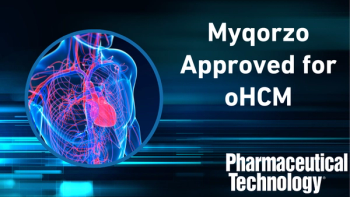
- Pharmaceutical Technology-04-02-2008
- Volume 32
- Issue 4
Suppositories: The Incomplete Story
A reference book omits important information and ignores advanced testing procedures.
Loyd V. Allen Jr., a well-known compounding expert, has edited a book titled Suppositories for professional compounding centers, hospital pharmacies, and compounding pharmacists in retail pharmacies. Although the book provides useful information, its omissions and idiosyncracies prevent it from being "an essential resource for all those involved in the formulation, development, manufacture, and testing of suppositories," as Allen describes the book.
Suppositories, Loyd V. Allen, Jr., Ed., Pharmaceutical Press, London, 2008, 245 pp., ISBN 978 0 85369 646 9.
The preface reveals one of the book's shortcomings when it explains that the literature review is limited to the last 25 years. The limitation is apparent in an early chapter that gives a detailed introduction to modern suppository bases. The chapter includes long tables of marketed products and their specifications, but offers no reasons for the huge variety of marketed bases. This may be a consequence of ignoring the patent literature published between 1950 and 1970.
Nor does the chapter explain which are the most important bases and what their special advantages are in different formulations. The European Pharmacopoeia topic of hard fat, as a collective name for semisynthetic triglycerides, is also not mentioned, which is surprising because the book's publisher is British.
A later chapter offers a detailed primer about compounding suppositories. It includes much practical advice for daily work such as the preparation of the active ingredient Peru Balsam.
On the other hand, the book does not propose that compounders use distinct bases for different tasks. For example, the book does not explain the importance of bases' different melting points or hydroxyl values. Also, the section titled "Preparation by Hand Rolling and Shaping" seems unusual in a book published in 2008.
A chapter called "Special Types of Suppositories" gives an overview of vaginal suppositories and tablets and urethral suppositories. The chapter discusses controlled-release, prolonged-release, and sustained-release suppositories without drawing clear distinctions between them.
The book cites many Japanese publications about hollow suppositories that incorporate a shaft filled with a second, mostly oleaginous, phase. These citations are remarkable because this technique allows the production of suppositories with incompatible ingredients.
Numerous techniques for examining and testing suppositories, as well as simulation of their in vivo melting behavior and drug release, are described in a section about quality control. The section sketches out a simplified test procedure for compounded suppositories. A problem of this chapter is that the author proposes no distinct testing procedure for branded products beyond that described in the US Pharmacopeia. The reader should know about the European Pharmacopoeia's modern specifications, but they are not mentioned.
Advice for patients and consumers is the focus of the "Clinical Considerations" chapter. The largest part of the chapter describes contemporary clinical-effectiveness studies of suppositories containing active ingredients from acetaminophen to verapamil.
Suppositories provides a detailed primer for compounding pharmacists in the US. The literature review about biopharmaceutics and pharmacokinetics may be of interest to pharmaceutical technologists in industry or at universities. Aside from that feature, the book offers little help for the pharmaceutical professional who researches, develops, or produces dosage forms, contrary to the author's intention.
Heinz Sucker is professor emeritus at the University of Bern, Bernerring 70 CH-4054 Basel, Switzerland, tel. 141 61 281 0084,
Articles in this issue
over 17 years ago
A Transformation in the Makingover 17 years ago
Vapors, Venison, and Videosover 17 years ago
Inside IPEC-EUROPE: Pharmaceutical Excipients—The View from the EUover 17 years ago
Measuring Excipient-Market Growthover 17 years ago
Report From: China, May 2008over 17 years ago
Weak Link in the Pharmaceutical Supply Chainover 17 years ago
Spectrophotometric Determination of Leadover 17 years ago
Message in a Bottleover 17 years ago
Tracking the Potential of Excipientsover 17 years ago
Coming Down the Pike: Bispecific mABsNewsletter
Get the essential updates shaping the future of pharma manufacturing and compliance—subscribe today to Pharmaceutical Technology and never miss a breakthrough.




